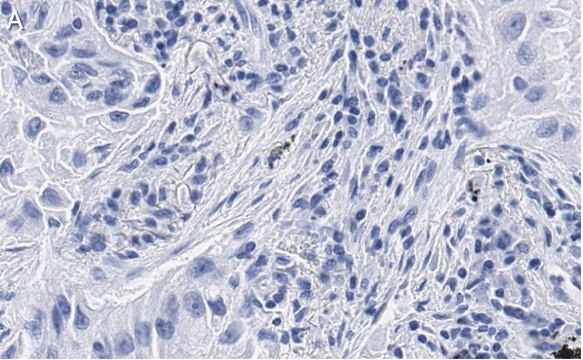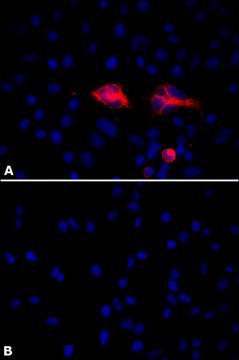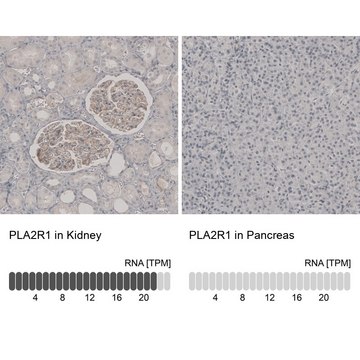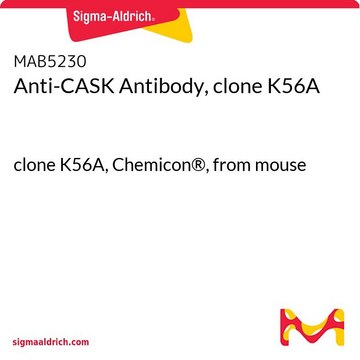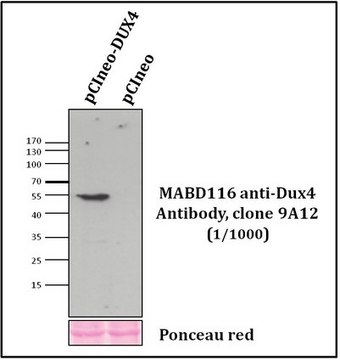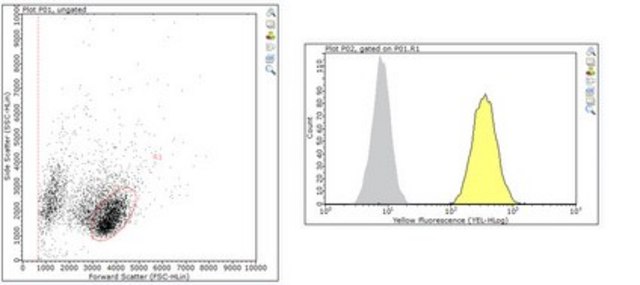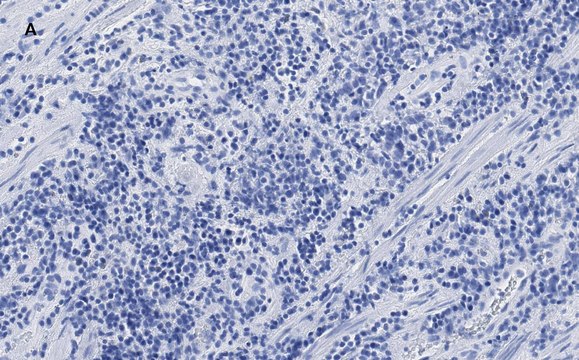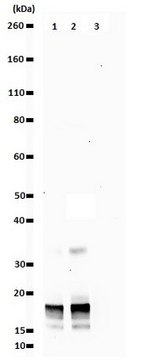MABC89
Anti-uPAR Antibody, clone 3C6 (Azide Free)
clone 3C6, from rabbit
Synonym(s):
Urokinase plasminogen activator surface receptor, U-PAR, uPAR, Monocyte activation antigen Mo3, CD87
About This Item
Recommended Products
biological source
rabbit
antibody form
purified immunoglobulin
antibody product type
primary antibodies
clone
3C6, monoclonal
species reactivity
human
technique(s)
flow cytometry: suitable
western blot: suitable
isotype
IgG1λ
NCBI accession no.
UniProt accession no.
shipped in
wet ice
target post-translational modification
unmodified
Gene Information
human ... PLAUR(5329)
General description
Specificity
Immunogen
Application
Apoptosis & Cancer
Apoptosis - Additional
Flow Cytometry Analysis: A representative lot of this antibody detected uPAR in MDA-MB-231, H1299 and PC3 cells (see Harel, E., et al., 2014 UCSF Scientific Poster).
Flow Cytometry Analysis: A representative lot of this antibody detected uPAR in HEK293 cells stably expressing uPAR (Dureseti et al., (2010) JBC. 285(35):26878–26888).
Inhibition Assay: A representative lot of this antibody inhibted the invasion of MDA-MB-231 cells (see Harel, E., et al., 2014 UCSF Scientific Poster). Inhibition of uPAR is maximized with the combination of Anti-uPAR, clone 3C6 (Cat. # MABC89) and Anti-uPAR, clone 2G10 (Cat. # MABC88).
Inhibition Assay: A representative lot of this antibody blocked uPAR-mediated invasion and signaling in H1299 cells (Dureseti et al., (2010) JBC. 285(35):26878–26888). Inhibition of uPAR is maximized with the combination of Anti-uPAR, clone 3C6 (Cat. # MABC89) and Anti-uPAR, clone 2G10 (Cat. # MABC88).
Quality
Western Blotting Analysis: A 1:2500 dilution of this antibody detected uPAR in 1 µg of non-reduced human uPAR recombinant protein, but not in 1 µg of reduced human uPAR recombinant protein.
Target description
Recombinant human uPAR (Leu23-Arg303) has a predicted molecular weight of ~31 kDa, but runs around ~45 kDa under non-reduced conditions.
Physical form
Storage and Stability
Handling Recommendations: Upon receipt and prior to removing the cap, centrifuge the vial and gently mix the solution. Aliquot into microcentrifuge tubes and store at -20°C. Avoid repeated freeze/thaw cycles, which may damage IgG and affect product performance.
Other Notes
Disclaimer
Not finding the right product?
Try our Product Selector Tool.
recommended
Certificates of Analysis (COA)
Search for Certificates of Analysis (COA) by entering the products Lot/Batch Number. Lot and Batch Numbers can be found on a product’s label following the words ‘Lot’ or ‘Batch’.
Already Own This Product?
Find documentation for the products that you have recently purchased in the Document Library.
Our team of scientists has experience in all areas of research including Life Science, Material Science, Chemical Synthesis, Chromatography, Analytical and many others.
Contact Technical Service